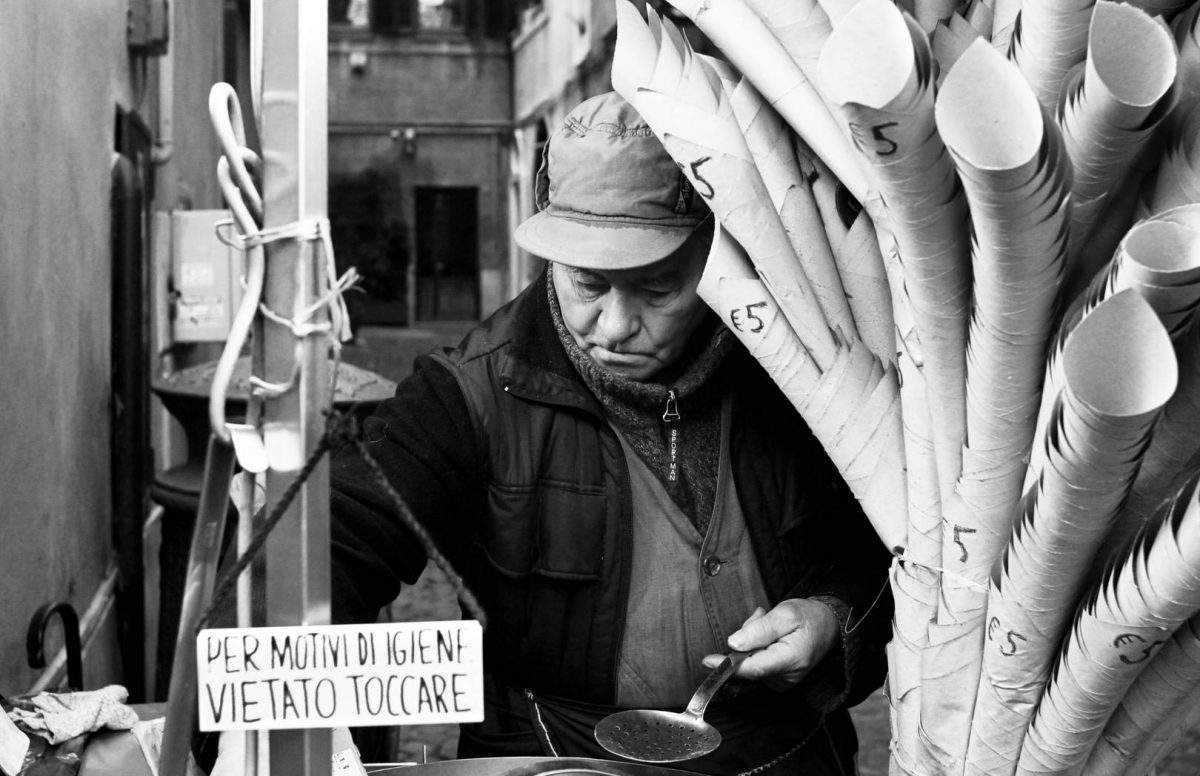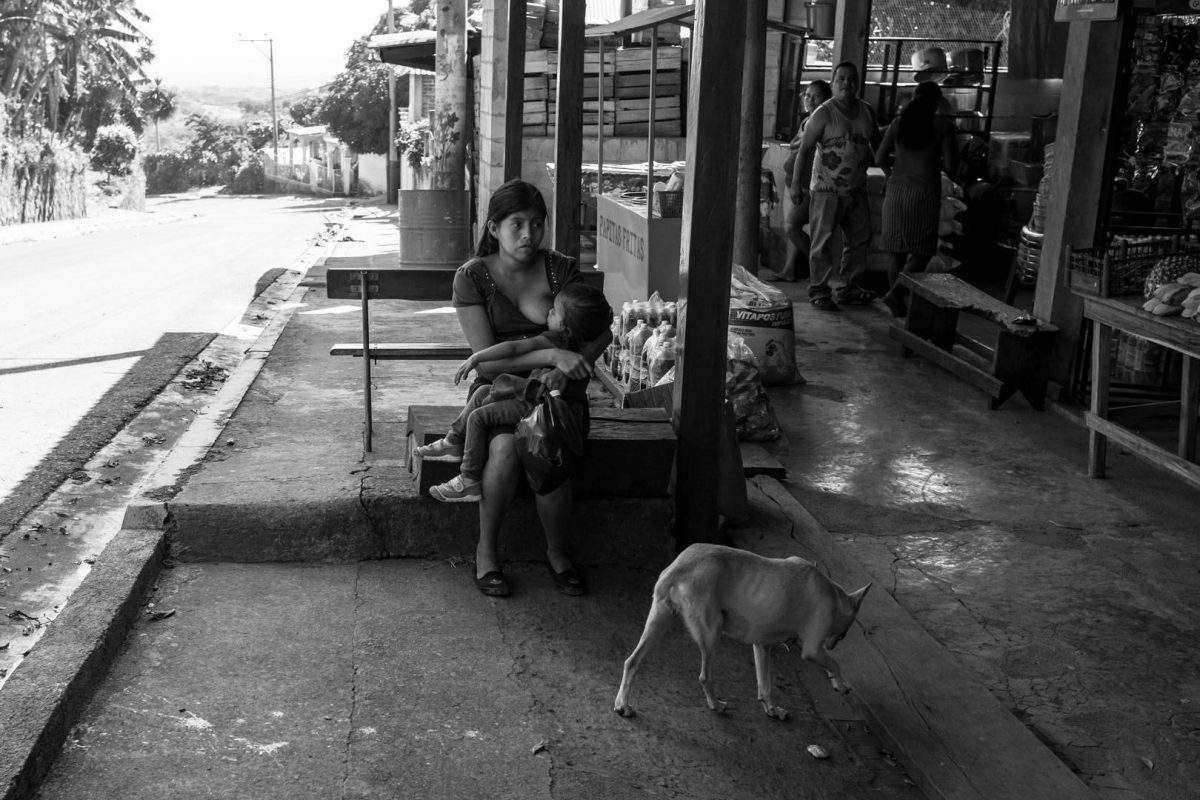Last Updated on January 23, 2022
What I’ve Learned After 10 Years of Doing Street Photography
Here is a very personal approach to Street Photography in which I share some of the most valuable lessons I’ve learned after a decade of walking with a camera in my hand.
What is Street Photography?
Page Contents
That is definitely not an easy question to answer, but since I’m allowing myself to share my own approach, then things will be less hard to handle with. First of all, this is not intended to be a definitive guide for street photography.
Street photography is something that we as photographers embrace, it is more of an approach and a lifestyle, it is a way of seeing life, and it has nothing to do with rules and laws.
Said that I must confess that these words here are just a reflection of a mixture of my personal thoughts and some enlightening ideas from photographers I admire and respect.

Photo by Federico Alegría
Street Photography – Online Photography Courses
Personal Concept About Street Photography
Each street photographer develops in time a personal concept that will answer to themselves “what is street photography?”. My own ideas and conclusions have been evolving, and after ten years now, I have a somewhat definition of what it is for me to be a street photographer.
I’m sure this concept and ideas will evolve in two or three decades from here on, and I don’t mind since that’s the beautiful thing about street photography. It is simply a lifestyle that defines us as human beings.
It is true that street photography worldwide shares certain aesthetic aspects that could make it easy to confuse with a solidly defined genre. But as we keep on digging about what it is to do street photography, things start to dilute and boundaries fade away. If we become passionate about street photography, it is easier to understand the sociological act of ethnography.
Street Photography – Human Life
In simple words, for me (Federico Alegría), street photography is just one out of several universal tools that allow us to document human life. As human beings we mainly respond to even harder to define social concepts or constructions; hence the easiness of documenting life where people clash more often together, the streets.
It doesn’t matter if this happens or not at a physical street, a park, a rural zone, or even a mall. For me, if it reflects every day, it is a street photograph.

Photo by Federico Alegría
The Candid Approach
One of the first words I learned when I started photographing the everyday life scenes (ergo, doing street photography) was “candid”. It is funny how I even though that what I was doing was indeed called “candid photography”.
This happened even prior to discovering the title “street photography” which obviously isn’t the most adequate name due to all the messy confusions it has generated equally among photographers and non-photographers.
Some Considerations on Being Unnoticed
So, back to candid. It is more of a strategy rather than a genre, and it is has a highly sophisticated synonym often called “being inconspicuous”. This simply refers to photograph our subjects and scenes while being almost unnoticed. You can call it unobtrusive, stealthy, nosey or even voyeuristic, you name it.
The important thing is that you understand that this is just one way of doing things. There are many photographers working extremely well and worrying very little to nothing about being noticed, just look at how Mark Power or Bruce Gilden approach reality for example.

Photo by Federico Alegría
Read more: Free Photography E-Books
Certain Techniques on Street Photography
Each street photographer learns to develop certain techniques that allow them to capture the photos they want while still being unnoticed or staying candid. This requires to get off the archetypal poses of the “professional photographer”, in fact, I even try hard to look more like a regular individual rather than an outrageous photographer.
Shooting from the Hip
Shooting from the hip (and even from the back), acting like I’m shooting something else on the distance and being sneaky, are my favourite shooting techniques. This, of course, is used for me only if I haven’t had the time of being able to become part of the scene or connecting with the people I’m documenting.
If I’m able to talk to the people and embed myself within their context, then things get less rushy and I’m able not only to be more in control but also able to connect with the people.
Connect with the People
Connecting with the people is for me the ultimate goal. Otherwise, I’ll be only doing voyeuristic single-image-reportages with no soul most of the times. All these techniques I’ve shared require practice and are no guarantee for good photographs after all.
The Importance of Being Unobtrusive
As photographers willing to document humanity in their regular habitats, we crave for nature and objectiveness. This is better achieved (or easier) when we manage to become minimally unnoticed by our subjects.
This requires a blend of inconspicuous gear and some nicely developed social skills.
I’ll talk about this later.
The importance of being unobtrusive relies on being able to capture that “candid” feeling many great street photographs have. This can only be achieved with practice, and it often goes beyond photography itself.
Being unnoticed requires being part of the reality that we are documenting, and that is perhaps the only way you’ll able to achieve meaningful photographs that serve as evidence of what is life.

Photo by Federico Alegría
Some Challenges
Here are some relevant challenges that you’ll be likely to deal with if you are interested in street photography. First of all, there is very little control (if any) of what is going to be on the frame, hence the popularity of black and white images when it comes to street photography.
For me it is a solution rather than a style or approach, black and white reduces distractions imposed by randomly assembled colours on the scene.
Personally speaking, I must say, I pursue good colour photographs, but I rarely achieve that aesthetic quality that makes me feel good about the due to the mixture among random colours.
Financial Challenge
Then there is the financial challenge. And unless we have the fortune of being backed by a research project or a fine art gallery, street photography might suppose certain various challenges if you want to make a living out of doing these sort of photographs.
Although, it gives huge levels of satisfaction. And the only reason why this is true for me is that the race is long, but at the end is only with ourselves.
And last but not least, it is hard to get better each time. As time goes by, it gets even harder and harder to improve as street photographers and the only reason why is because we are pushing ourselves further and further each time.
One key notion of this stage in the street photographer’s lifestyle is the keepers’ ratio. It becomes really hard to get photographs that make us extremely proud of.

Photo by Federico Alegría
Some Brief Considerations on Gear
It is easy to fall in love with cameras, some of them are great-looking machines, and after all, they are our beloved and trusted tools for being picture makers. But gear should be seen like that, like the tools they are.
At the dawn of my career as a photographer, I was hypnotized by big clunky cameras, because after all, that was what the big boys used. Now, I think very much different.
Film, Small, Mirrorless, Compact, and Point and Shoot Cameras
After a couple of years of documenting life at the streets (and other social contexts), I felt the need for a small portable camera that could fit in my messenger bag. That was the reason why I turned myself to small cameras, and I’ll never go back.
Some street photographers use huge cameras and other use a very little point and shoot; it really doesn’t matter as long as you have a purpose backing up your gear related acquisitions.
35mm Lenses
Now, about lenses, well, my camera has a fixed 23mm (35mm equivalent) and I can’t change it, so if I want to get closer I have to walk, and if I want a wider shot I need to take some steps back. But if you as a photographer are able to interchange lenses, I have really good advice for you.
Try sticking to one single optic for at least 6 months. Don’t change it, just keep it there, and if it is a prime, even better. Using a single focal length for a long period of time will allow you to transform the camera into an extension not only of your eyes but also of your body and your mind.
I know this sounds exaggerated but trust me, it isn’t. If you are able to even fall in love with a specific focal length, you’ll be able to even anticipate what will be in your frame without even taking the camera to your eye.
The Importance of Developing Social Skills
After 10 years of documenting the near (and not so close) streets of my life, people keep asking me two things, “how do you manage to be unnoticed?” and “do you ask for permission or not?”.
Well, sometimes I’m just sneaky, and being fast helps (oh, and I’m quite small too). And sometimes, I do ask for permission, but after a certain level of trust is achieved.
How do You Manage to be Unnoticed?
I think there is one fundamental skill that every photographer should develop in order to capture meaningful imagery, and it has nothing to do with aperture or gear. I’m referring to social skills here.
Robert Capa said that “if your pictures aren’t good enough, you aren’t close enough”, and thus don’t necessarily mean to be macro-close to scenes and subject. It means that we as photographers need to be close to the stories and social contexts that we are trying to document with our cameras.
Read more: Canon EOS R System Fast Guide
Get Close to People
Being able to get close to people, and making them feel comfortable with our presence while taking pictures of their everyday life is a priceless asset of great street photography.
It is almost impossible to capture pictures that result in aesthetic experiences or compelling messages if we aren’t able to connect with people and their cultures.
Street photography is just an approximation to reality
I’ve found that street photography should be done at a slow pace rhythm. This helps a lot because, after a while, people get used to having you around taking pictures, and after a certain extremely low level of trust is gained or established, true “candid” photographs can take place.
Being respectful towards people traditions and cultures, and even a smiley attitude has helped me out in countless times.
Read more: Bird Photography Guide: How to Get Perfect Bird Pictures
11 Tips to Become a Better Street Photographer
This is a very crucial question, and I’ll answer it with a brief list based on my own experiences.
- Hanging out with other photographers
- Sharing the little I know with others
- Practising almost every day
- Consuming photographs without distractions
- Watching films, but focusing on cinematography
- Investing in photo-books (not gear or photography related manuals)
- Research
- Exposing my work to critique processes and giving critique to others
- Entering photography renown contests
- Building a solid portfolio and allowing others to curate it as well
- Submitting the aforementioned portfolio to reviews
I don’t know if I’m doing things right or not, but certainly, all these things have allowed me to become harsher with my own work.